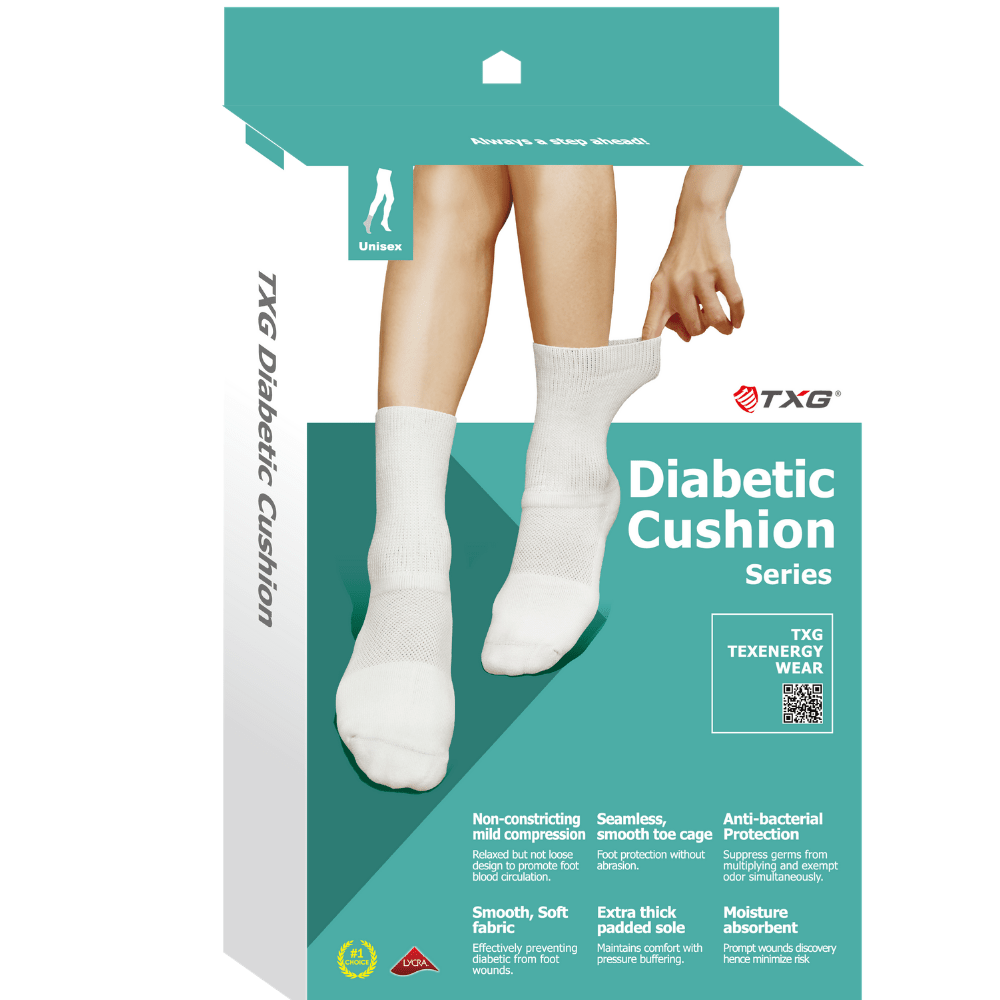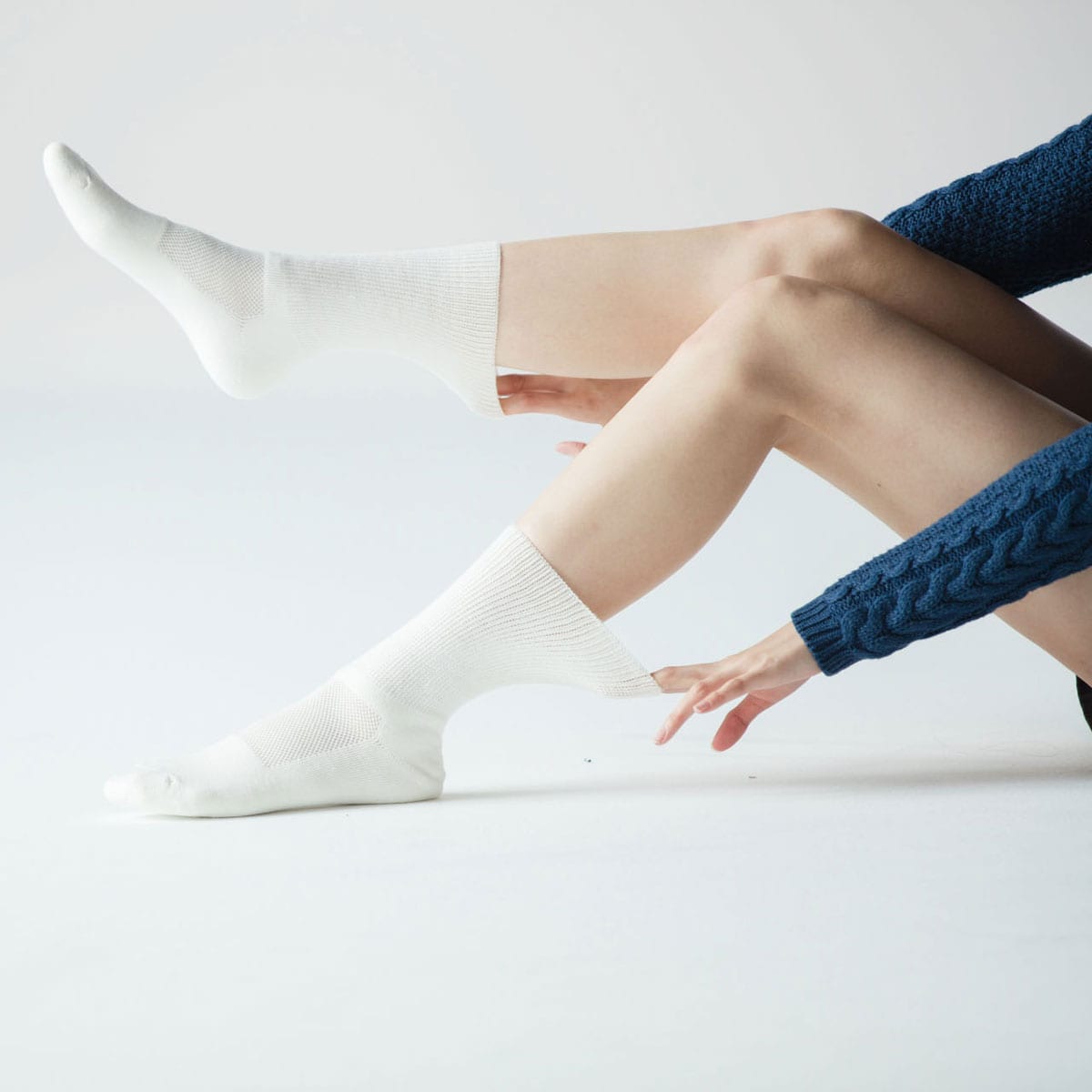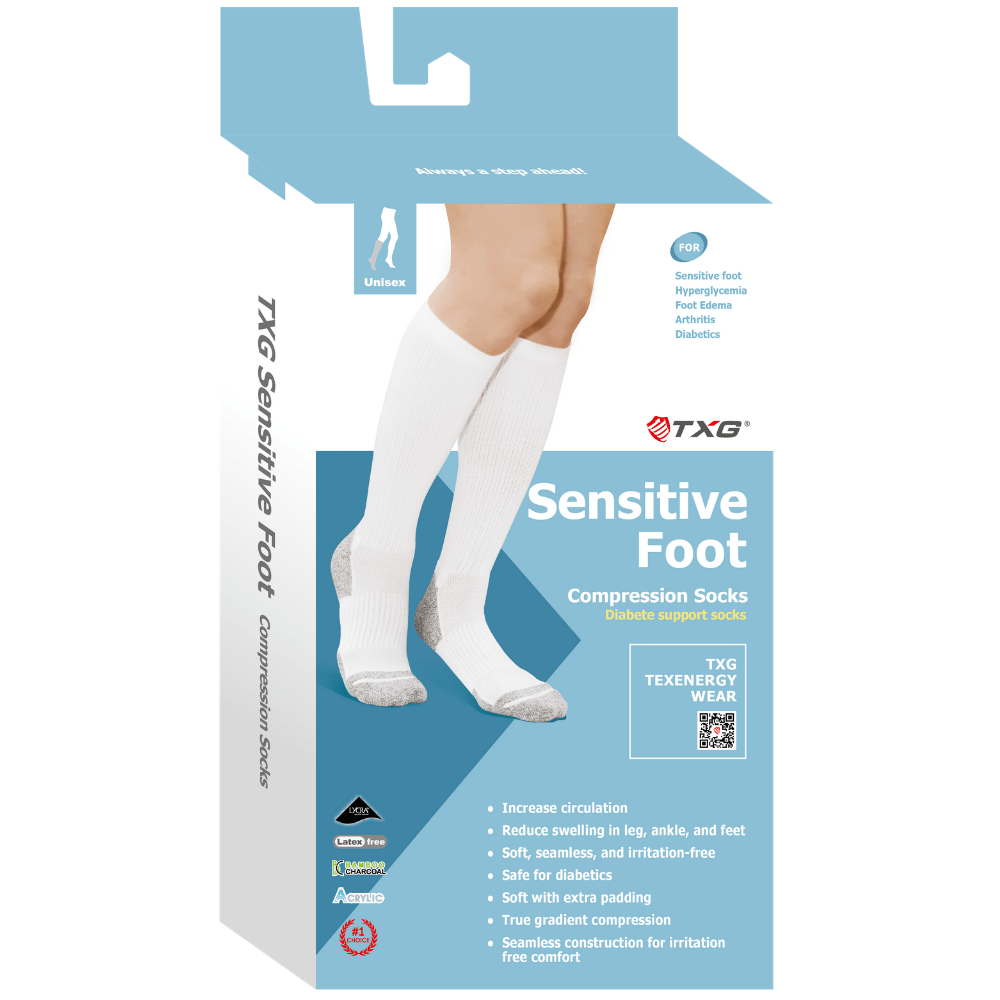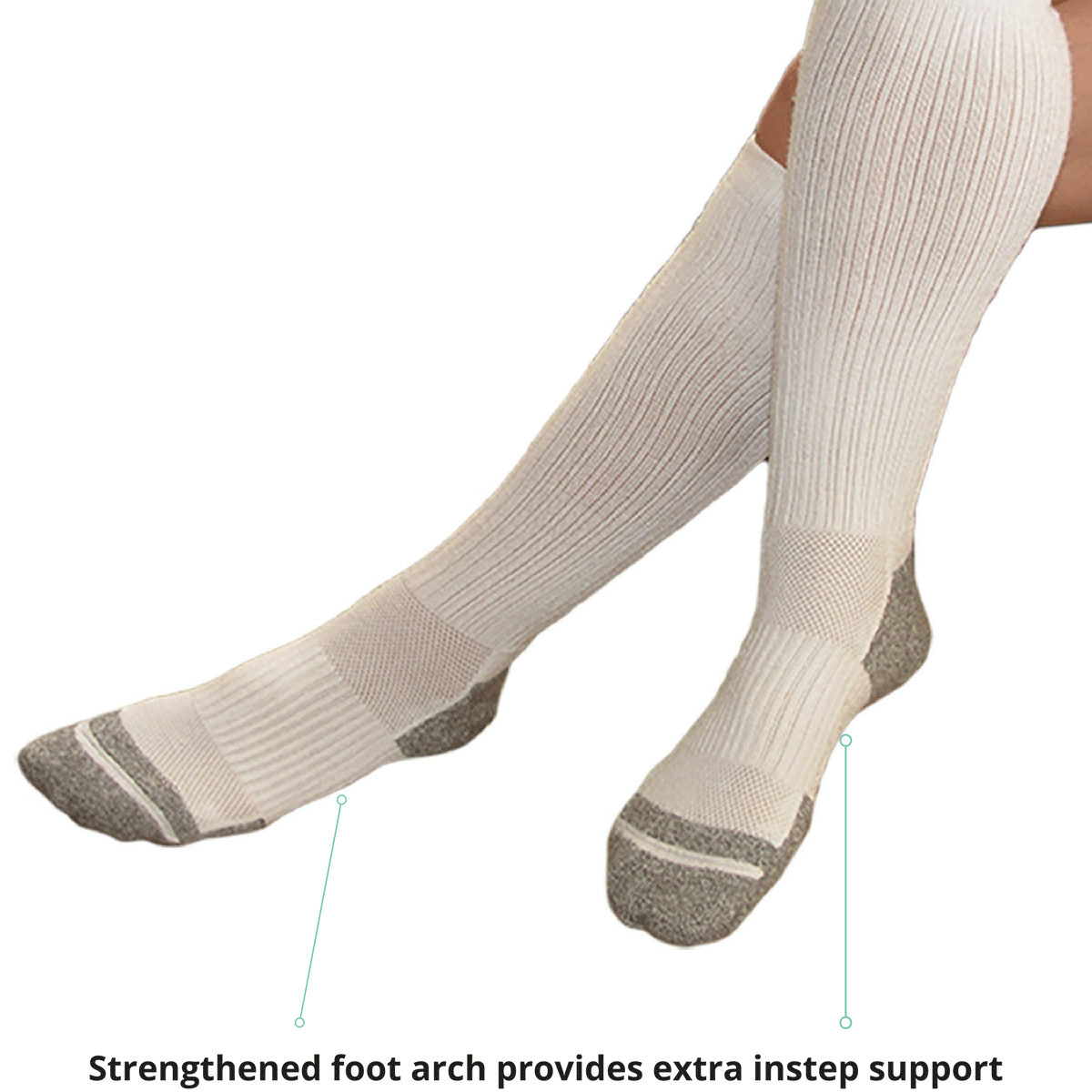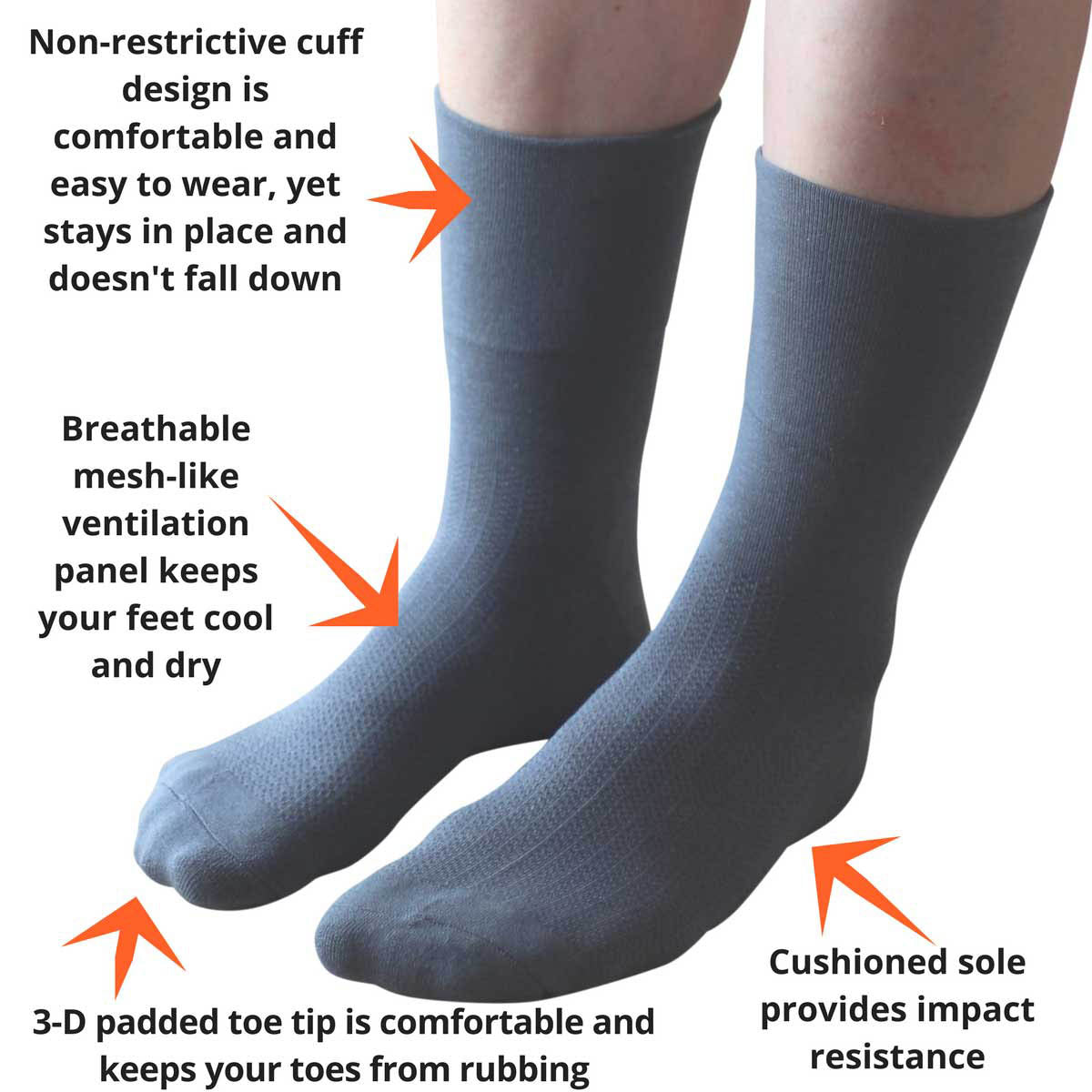I have a health condition
Why Graduated Compression Wear can be Beneficial if you have a Health Condition?

What is Deep Vein Thrombosis (DVT)?
A deep vein thrombosis (DVT) is a blood clot within a deep vein. A clot inside a blood vessel is called a thrombosis. DVT predominantly develops within the legs and may not be accompanied by any symptoms. The non-specific symptoms of DVT include pain, swelling, redness, warmness, and engorged superficial veins (‘spider veins’) in the leg. DVT may go away naturally, but serious complications can develop when a thrombosis dislodges and travels to the lungs to become a life-threatening pulmonary embolism (PE). DVT and PE are the two manifestations of the disease venous thromboembolism. A late complication of DVT is the post-thrombotic syndrome, which can manifest itself as oedema, pain or discomfort and skin problems. About 1 in 1000 adults develop a DVT annually.
In addition to anticoagulation treatment, graduated compression socks or stockings, that apply firm pressure at the ankles and graduate to a lower pressure towards the knees, are recommended for those at risk of developing, showing symptoms of, or have been diagnosed with DVT.
Factors related to DVT:
Besides inherited attributes, there are many other factors that exacerbate the development of DVT:
- Older age
- Major surgery and orthopaedic surgery, cancers
- Immobilization: e.g. sitting for long periods, e.g. when travelling by air, constrained by orthopaedic casts
- Pregnancy and the postpartum period
- Hormonal replacement therapy
- Central venous catheters
- Some autoimmune diseases
- Nephrotic syndrome
- Obesity
- Infections
- HIV
- Polycythemia vera
- Chemotherapy
How to prevent DVT?
Regular exercise and movement and in-flight exercises during long-haul flights.
Regular massage of leg (and other) muscles.
Wear loose clothes and graduated compression socks or stockings. Wearing arm sleeves can also be beneficial.
If you suspect that you have DVT type symptoms, we recommend that you contact your Doctor.
What is Oedema?
Peripheral Oedema, also known as oedema (and previously known as dropsy or hydropsy), is swelling of hands, arms, ankles, legs, feet (other areas of the body can also be affected) caused by retention of fluids in the body’s tissues. It is most often linked to issues with the venous or lymphatic systems of the body.
If you suspect you may have oedema type symptoms, we recommend that you contact your Doctor.
The wearing of graduated compression socks or stockings (or leg sleeves and/or arm sleeves) is recognised as being an effective method of countering swelling caused by oedema.
What are Varicose Veins?
Varicose Veins are caused by the blood in veins (usually, but not always) from lower limbs of the body failing to flow back to the heart because of the poor or damaged condition of the leaflet valves in the veins (valvular incompetence), exacerbated by standing, sitting or maintaining a particular position for a long period of time. Pregnancy can also initiate varicose veins to develop. The blood remaining in the veins causes swelling and is known as “varicose”. Usually, the superficial veins will be noticeable at first, often referred to ‘spider veins’. Larger varicose veins cause noticeable swelling under the skin.
Identifying Varicose Veins:
Examine your legs for any of the conditions below: Purplish to dark greenish spots or twisting lines (veins).
If you have any symptoms) of or suspect you may have varicose veins (purplish to dark greenish spots or twisting vein lines), we recommend that you contact your doctor.
The wearing of compression socks and stockings is well recognized as being an effective countermeasure against the development and/or spread of varicose veins.
All styles of TXG Graduated Compression socks are suitable for varicose vein prevention/treatment. The level of compression you require should be considered with your physical status. Please refer to our compression guides or check with your doctor if you are not sure what compression level is best for you.
Diabetes Care
Diabetes affects a large percentage of the population and has been described as an epidemic. People with diabetes can develop many different foot problems. What might otherwise be an insignificant problem for non-diabetics, can develop into very serious complications for those with diabetes. It is estimated that only around 50% of Diabetics are diagnosed, this means that half of people with diabetes are not even aware of the potential complications that they could face.
Neuropathy: Damage to Nerves
Foot problems most often happen when there is nerve damage, also called neuropathy, which can be painful, or results in loss of feeling in your feet. A loss of feeling can enable a number of other serious complications to develop. Protecting against neuropathy, achieved in part by maintaining healthy blood circulation, is very important.
Vascular Disease: Poor Blood Circulation
In addition to consequential nerve damage, poor blood circulation reduces the ability of your feet to recover from minor scrapes or to fight the onset of infections. Maintaining good blood circulation is paramount to healthy feet.
Exercise is good for poor circulation. It stimulates blood flow in the legs and feet. Walking while wearing compression socks in sturdy, good-fitting, comfortable shoes will boost blood circulation throughout your legs and feet.
All-round protection of the diabetic feet
For Mild Diabetics:
TXG’s Sensitive Foot Graduated Compression socks made from anti-bacterial fibres will enhance blood circulation and are helpful in lowering extremity oedema, inhibiting the propagation of bacteria and will therefore hasten the recovery of any wounds.
For moderate to severe diabetic feet
It is important to keep feet warm, clean, dry and free from bacteria. Due to diabetic complications of moderate to severe, compression socks should only be worn on a recommendation from your Doctor.
Socks should be selected that are designed not to stimulate the skin and cause any friction wounds, inflammation or ulceration.
TXG Diabetic Cushion Socks with zero compression, good breathability and fabricated from fibres with antibacterial properties are the most suitable for severe diabetics with foot problems. (Bacteria can easily be retained in natural materials like cotton).
The design of diabetic socks utilizes soft fabrics and incorporate seamless joins to avoid any possible irritations or wounds caused by friction.
TXG Diabetic Cushion Socks incorporate all of these ideal attributes for diabetics.
Tips for diabetic feet
- Ensure you buy shoes with soft upper material with smooth seams and with thick cushioned soles.
- Examine your shoes regularly for possible chafing points, damage to material and foreign objects.
- Put on fresh diabetic cushion socks every day. Avoid thick seams or darned areas which may cause pressure points.
- Always wear socks with all your shoes. Do not go out on bare feet if you are suffering from damaged skin.
- Do not use hot water bottles or electric pads to keep feet warm, especially in the case of loss of sensitivity loss your feet may be at risk from burning!
We recommend that all foot concerns of diabetics should be referred to a medical professional.

